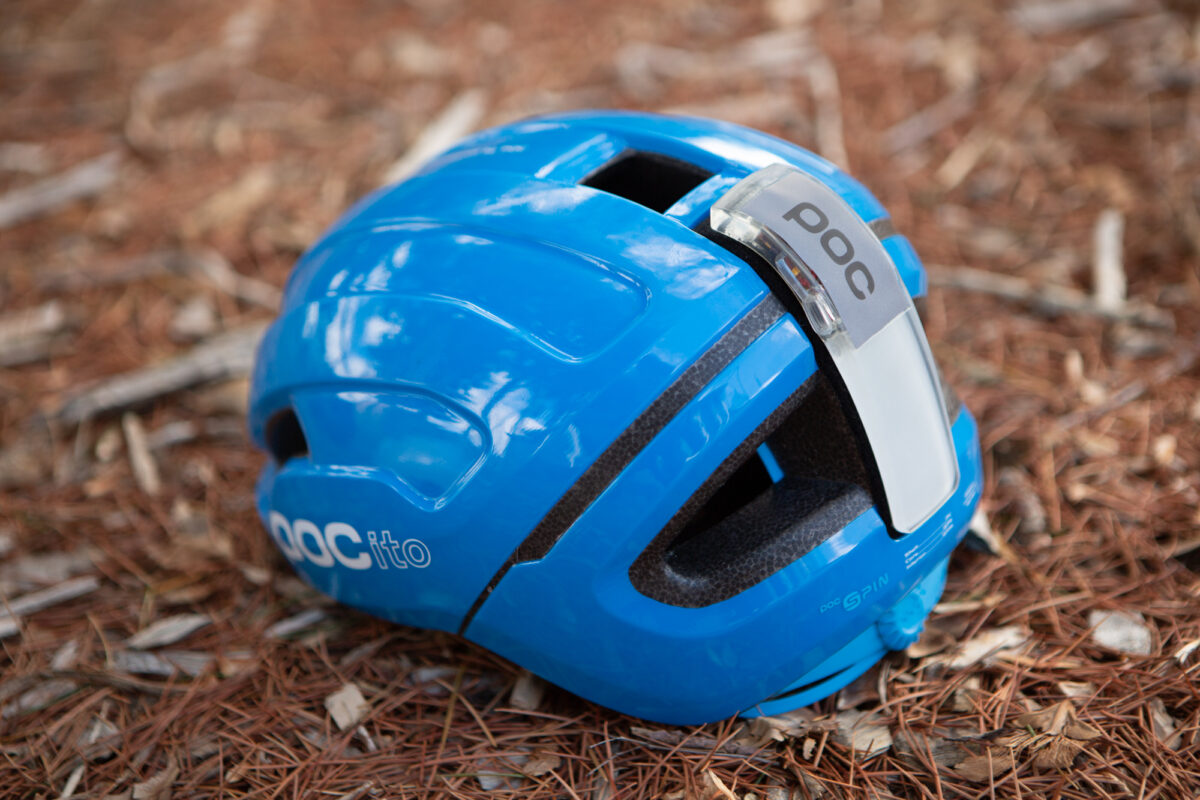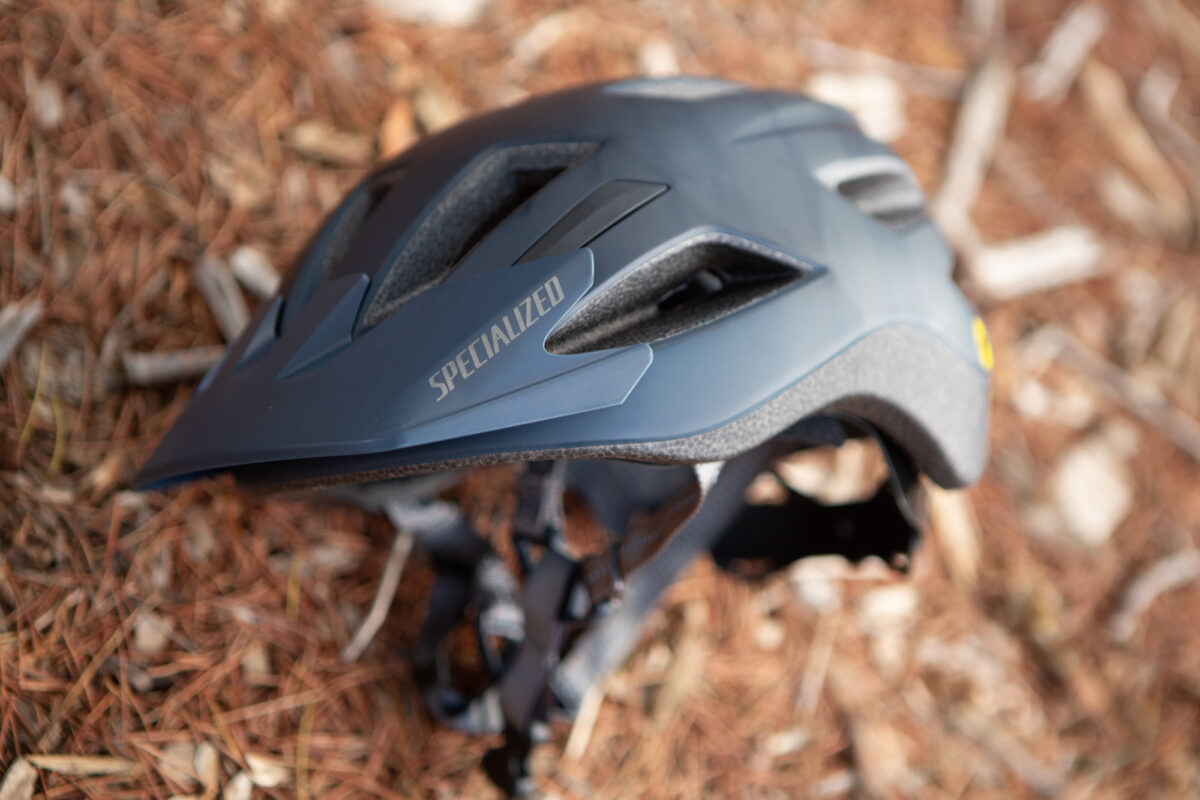
(Photo: Jonathan Maus/BikePortland)
One of my greatest joys is sharing my passion for bikes with my son. Part of that means being as safe about it as possible. From the earliest time my son was able to ride a bike I always made sure he had a helmet for every ride. Even when that meant a push bike and an experience that barely resembled riding a bike.
Over the years I’ve had the opportunity to look at a lot of helmets for both kids and adults. For me, and by extension my son, it’s important that helmets keep us safe but also look good and feel good to wear. There are a lot of great helmets on the market but this is a list of my current favorite options as well as some of the things I think are important when it comes to kids and helmets.
MIPS is a brand not a technology
MIPS stands for Multi-directional Impact Protection System. It is a brand name (MIPSProtection.com) that covers one specific approach to rotational impact protection. It’s a way for your head to slide inside the helmet when the impact is off center.
Stickers are not safety
Yes, it’s important to get a helmet that kids like but it’s also important that they are well protected. Whatever helmet you choose there should be some system of rotational impact protection. It’s not super important which one, just that it’s there.
The field of head trauma is always evolving and there’s no clear winner. Each company claims a competitive advantage but there’s nothing proven. Science is rarely completely sure of anything. Instead, what we have is a coalescing of opinions around the advantage of some system that addresses rotational impact.
Instead of picking and choosing winners in the rotational impact systems make sure there’s something. Then look for what will work for your kid better. If your kid has long hair MIPS can get caught and another option might be better. On the other hand, MIPS is more widely available and tends to be less expensive.
Getting back to the original sentiment about stickers though, style is important. It’s just not the most important and you shouldn’t have to choose. Rotational impact systems are inexpensive and widely available. There are tons of options out there with plenty of style solutions. There’s no reason to pick one or the other.
Teach kids to be careful with helmets
In most cases helmets are one time use. If you get in an accident, they need to be replaced. POC, Bontrager, and Specialized all offer different crash replacement policy options. It’s not a free helmet but read the fine print and it might help out if the worst happens. The problem is that there’s no distinct difference between getting in an accident and dropping a helmet.
Kids are kids and they won’t always remember to be careful. Kids are also thoughtful though. Teach them that their helmet is there to save their life and to treat it as such. Always treat your helmet with respect and it will return the favor when you need it.
Now to the list of helmets
The models below are my favorites and are all helmets I’ve personally touched and tested (with my son in this case). There might be other great options out there but these are options I can vouch for.
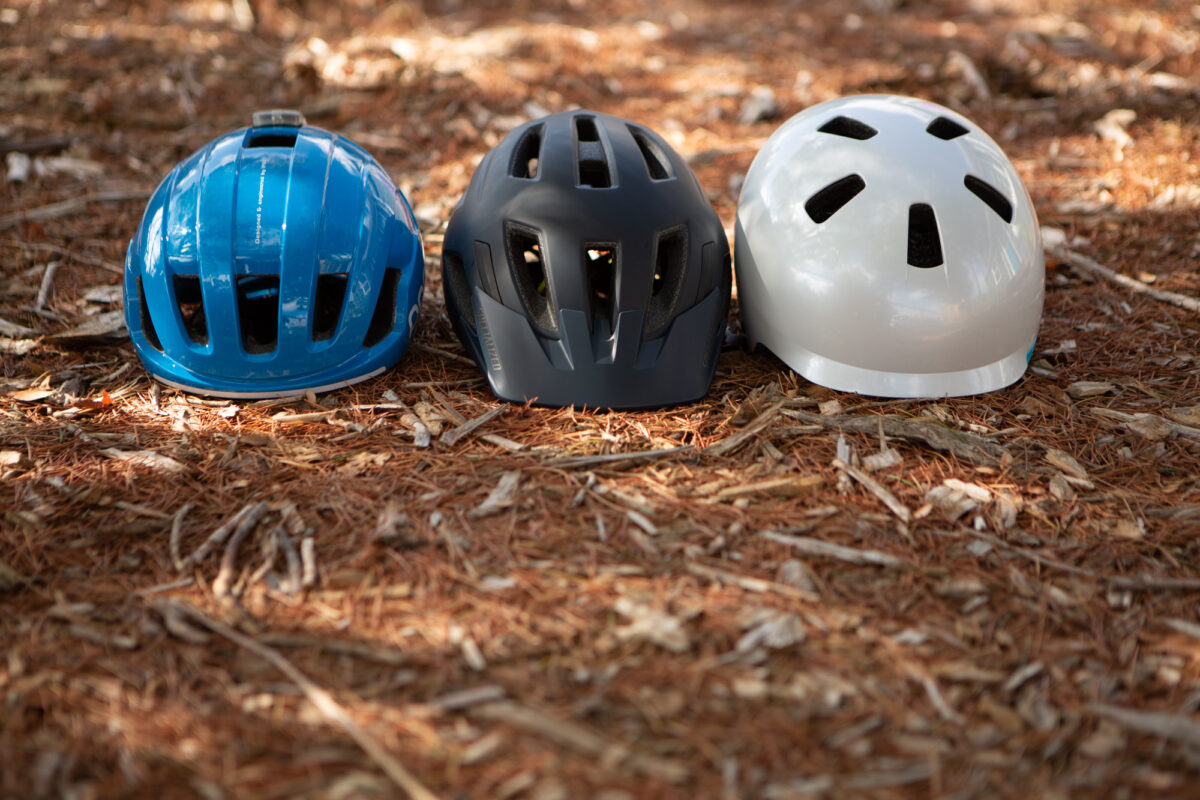
(Helmet photos by Josh Ross for BikePortland)
Advertisement
Bontrager Jet WaveCel
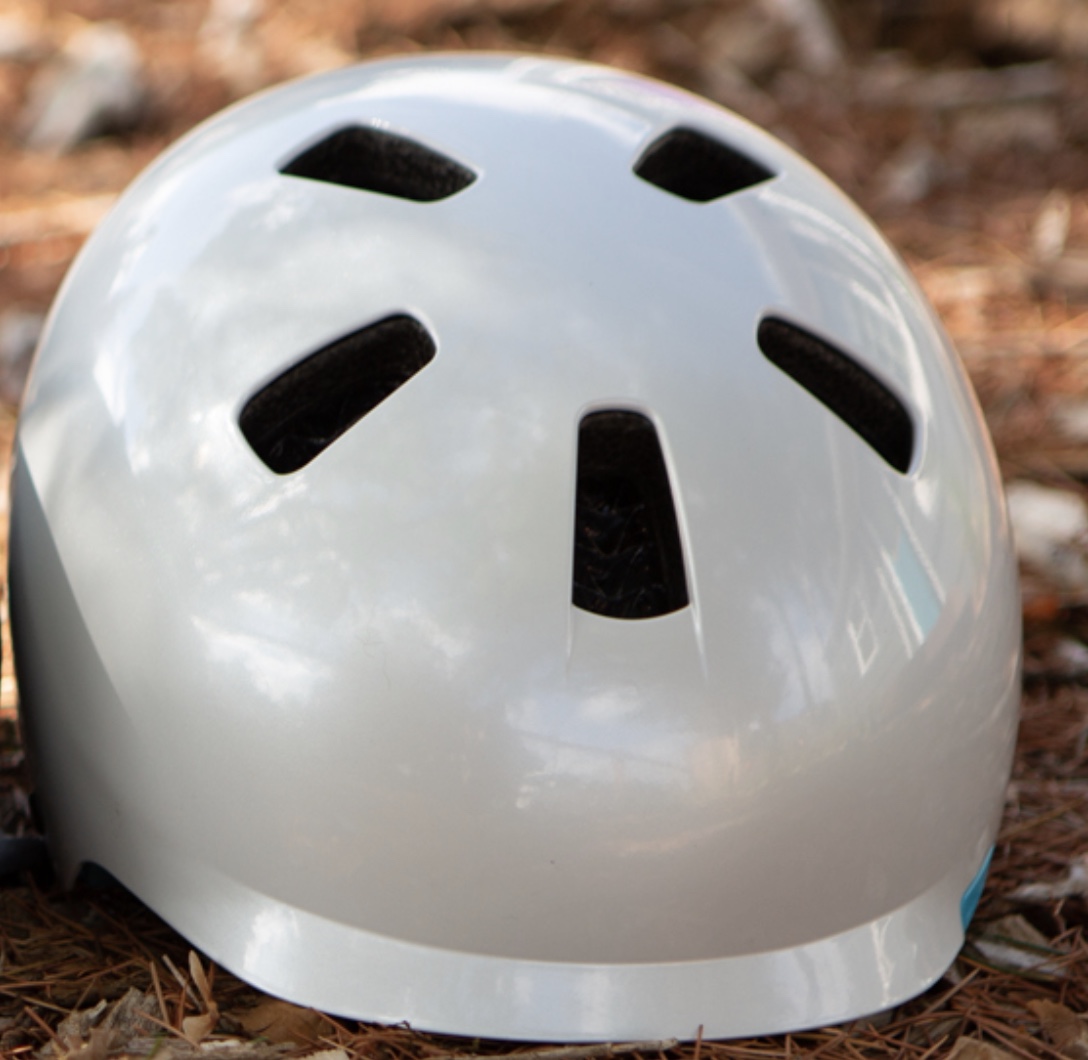


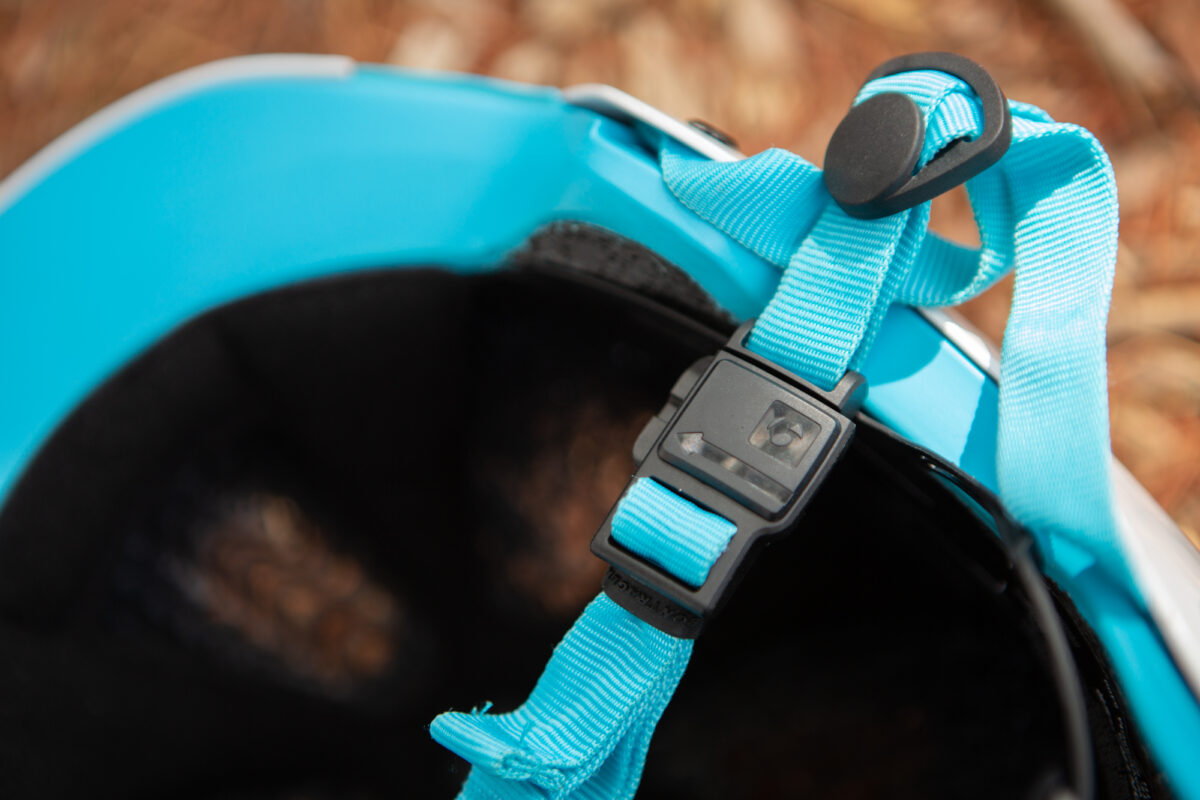
Bontrager made big waves when it announced WavCel technology. WaveCel is a system of collapsible plastic cells that lines the inside of some Bontrager helmets. The technology is exclusive and it handles some of the same challenges that MIPS addresses. There’s no definitive right way to handle the challenges associated with rotational impact but this is the Bontrager solution.
As good as WaveCel tech might be, it’s not the only thing that makes this a great helmet. Bontrager has really considered what a kids helmet goes through on a regular basis and they’ve got the features to back it up. The Fidlock magnetic buckle uses a sliding method that’s backed up with a magnet. It’s impossible to catch your kids’ skin in the buckle and it’s easy to buckle even without needing to get down on a knee and look under their chin. Then at the front there is a pronounced brim.
It’s incredibly important that a good helmet protects the forehead and Bontrager has thought this through. The straps keep the front of the helmet from moving up but the brim adds even more protection. It also adds sun protection but most importantly it should help to protect a child’s forehead and face in the event of a crash.
At the rear of the helmet is an easy to adjust dial. The design makes it easy for small fingers to manipulate while riding. A comfortable helmet is a helmet kids will wear and this kind of small detail goes a long way.
The final detail of this design that I really like as a parent is the soft touch material on the lower edge of the helmet. It’s a strip that runs along the entire bottom edge of the structure and it’s designed to help the helmet last longer. Dropping helmets can mean a replacement is necessary but kids can be brutal on helmets. Adding a bit of soft, deformable, material at the edge should help it hold up a bit longer.
The style is that of a skate helmet. It looks cool to kids but it also adds better coverage for safety. There is an included sticker kit that makes customization even easier right away. Stickers don’t keep kids safe but as an added bonus it’s nice.
— Bontrager Jet WaveCel Children’s Bike Helmet ($89.99)
POCito Omne Spin and POC Beacon LED

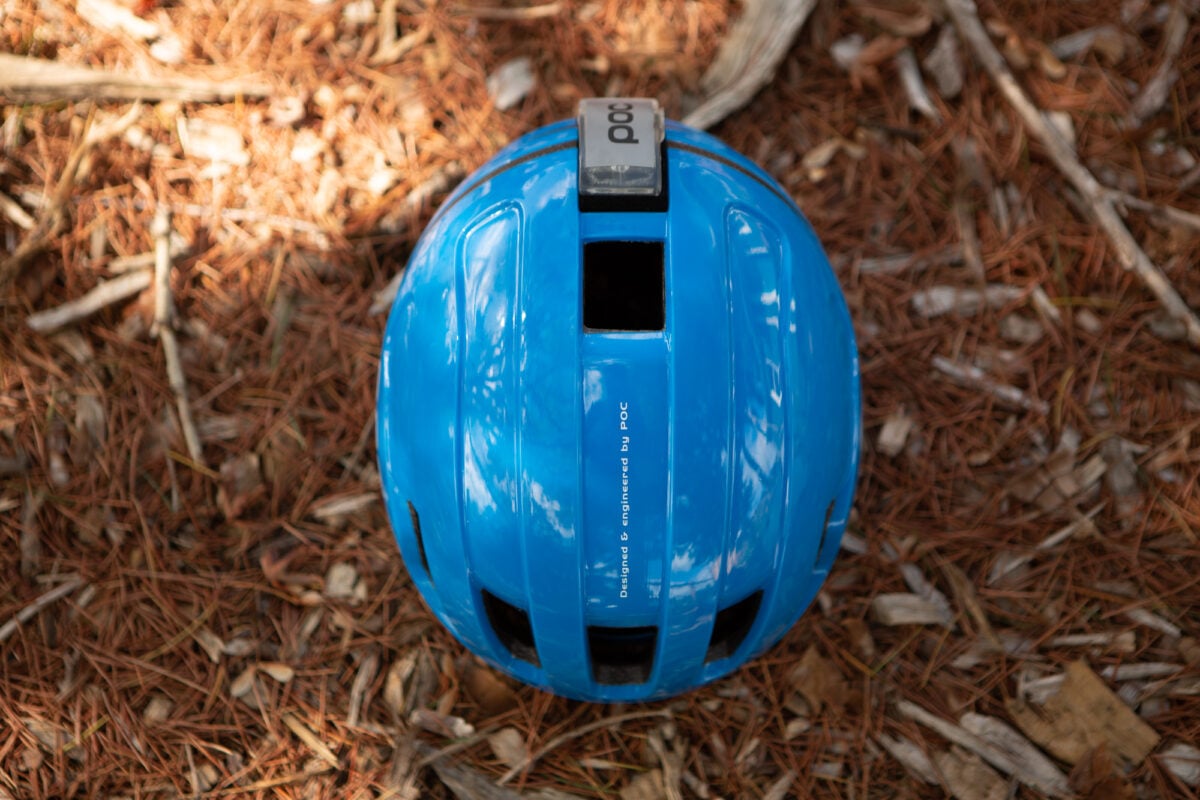
Just like with adult helmets there’s an element of style when it comes to kids helmets. If your kiddo is riding a road bike then they might not be into a skate, or mountain bike, style helmet. POC offers the POCito kids helmet with plenty of safety and a style that will match a road-oriented bike. When it came to choosing a helmet visually this was the one that my child picked.
While the bright blue and the style appealed to my kid, I could feel good about the safety features. That bright blue isn’t just about style. It’s one of four high-visibility colors that make sure he’s seen while riding. There’s also a reflective strip at the front and another trick is an optional light at the rear.
At the rear of the helmet there’s a removable reflective strip. Pull off the hook and loop holding it in place and you swap in a soft LED light. It does require an additional purchase but it keeps the reflectivity while adding options for lighting. Turning it on gets a solid red then push the button to cycle through a flashing red, solid red facing backwards and solid white facing forwards, and both lights flashing. It’s easy to turn on, lightweight, and rechargeable.
Beyond visibility there’s plenty of other safety features. POC has their own take on a rotational impact system and there’s a lot of thought to the strap system. There might not be a brim on this helmet but the arrangement of the straps means it would be very difficult to push the front above the forehead.
— POC POCito Omne Spin and POC Beacon LED ($20)
Specialized Shuffle Youth LED with MIPS
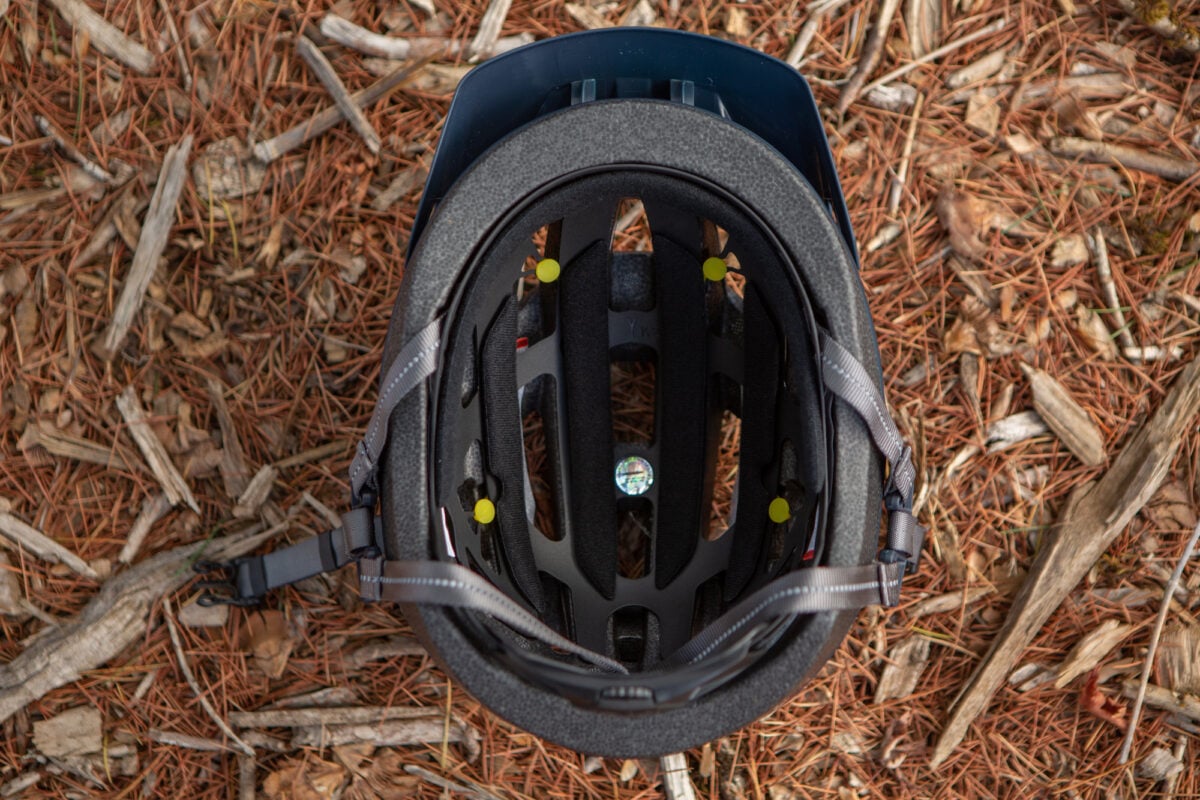
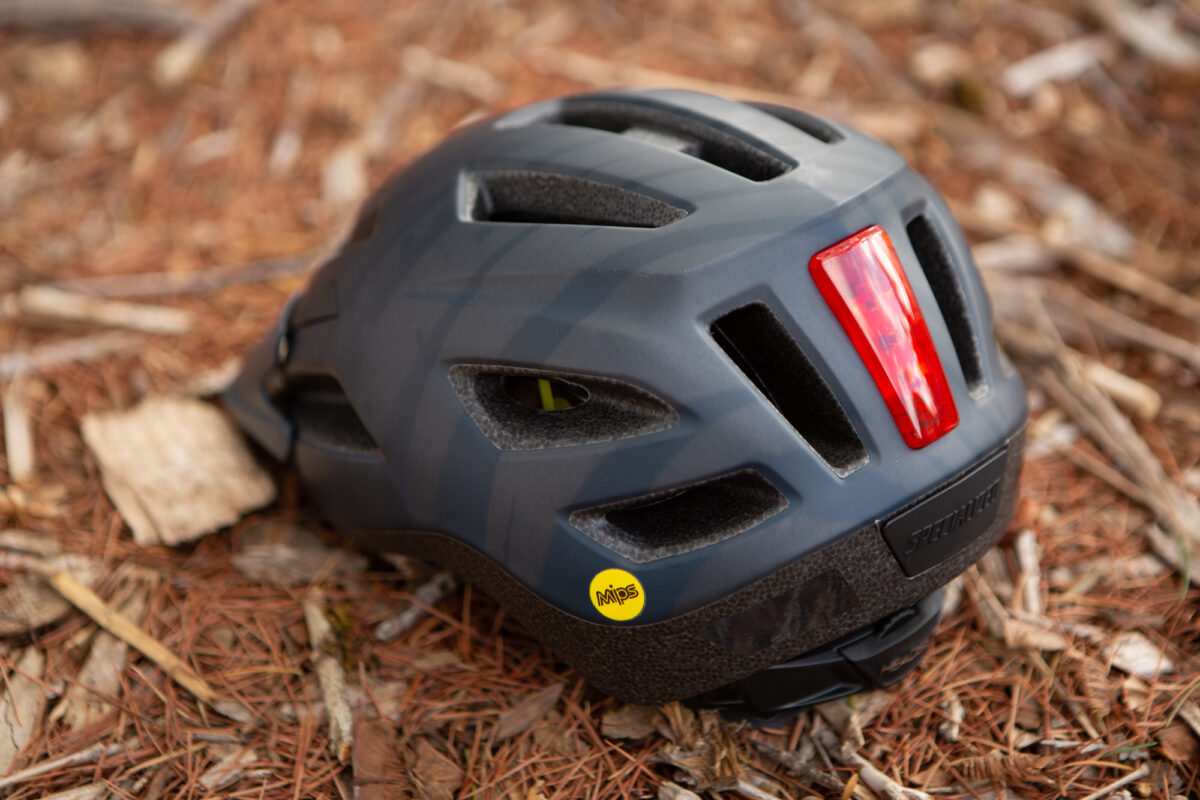
If your kid isn’t riding a road bike then a helmet with a road bike style doesn’t make much sense. Specialized offers not only a mountain bike style but also the necessary safety features and does it all at a bargain price.
When it comes to rotational impact systems the biggest name in the game is MIPS. Specialized has gone with a trusted name brand partner and likely saved themselves a bit of development cash that they can pass on to the consumer. It does mean though that the rear cradle is part of the MIPS system and therefore not vertically adjustable.
Sticking with the mountain bike theme the Shuffle LED gets a clip-on front visor. Mountain bikes put the rider in a more upright position and that means more sun in the eyes. To combat this, and also to fit the style, mountain bike helmets typically include a sun visor.
What the sun visor does not do is protect the rider. Just like with the POC option that means position of the front brim is incredibly important for safety. Specialized uses a four-piece strap system with plastic guides to make sure that the front of the helmet sits nice and low. The front strap on either side is a separate piece and the arrangement makes it almost impossible to get it wrong.
Instead of needing to purchase an add on light this helmet includes one. Admittedly, it is not as easy to use but it comes in the box. The attachment comes by way of a snug fit into a recess on the helmet. There’s no charging needed and instead you’ll find a replaceable battery. Press it once to turn it on and twice to get a flashing light. It’s a little tough to push but it’s plenty bright.
— Josh Ross, @josh_ross on Twitter
— Get our headlines delivered to your inbox.
— Support this independent community media outlet with a one-time contribution or monthly subscription.


